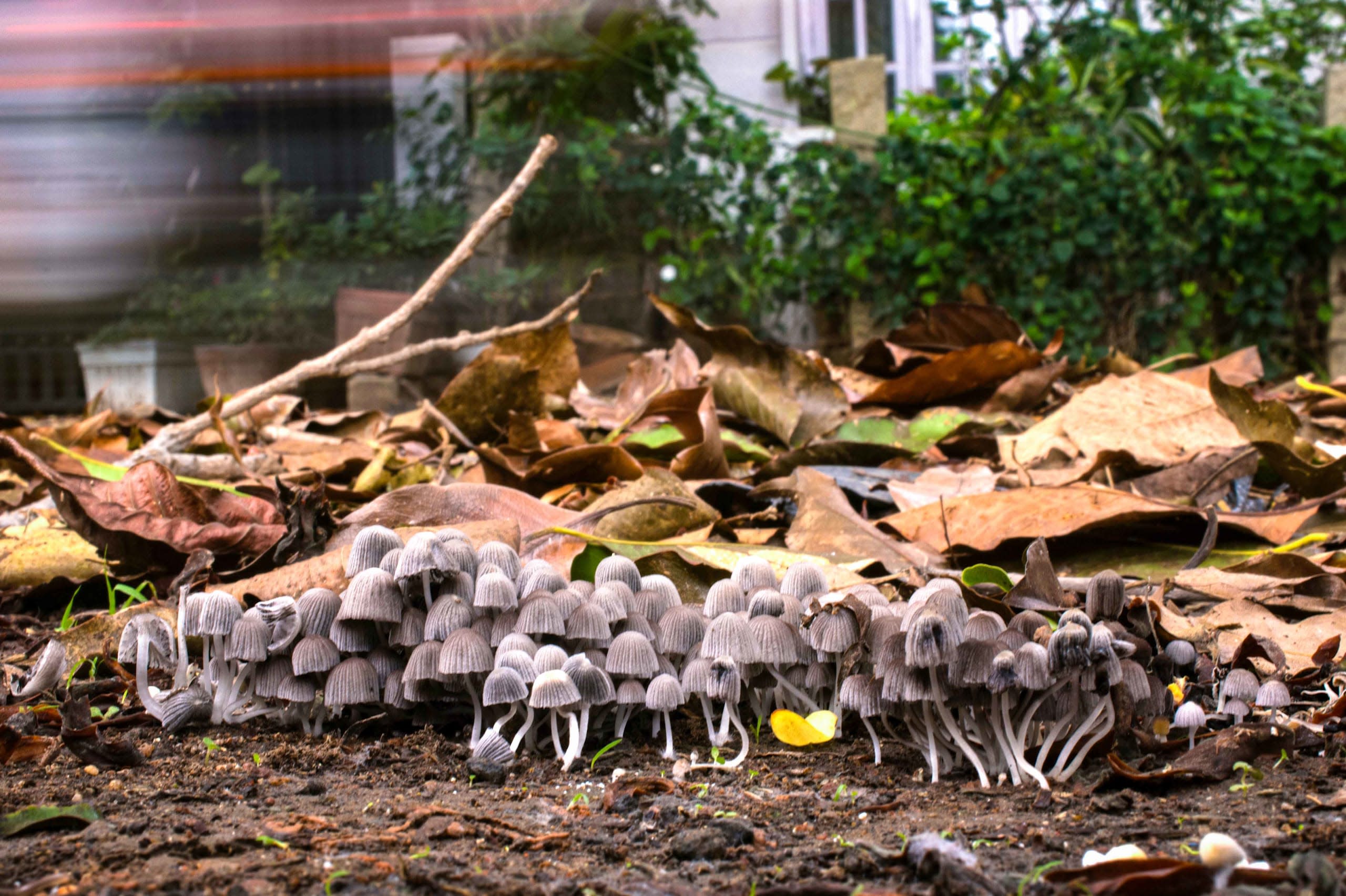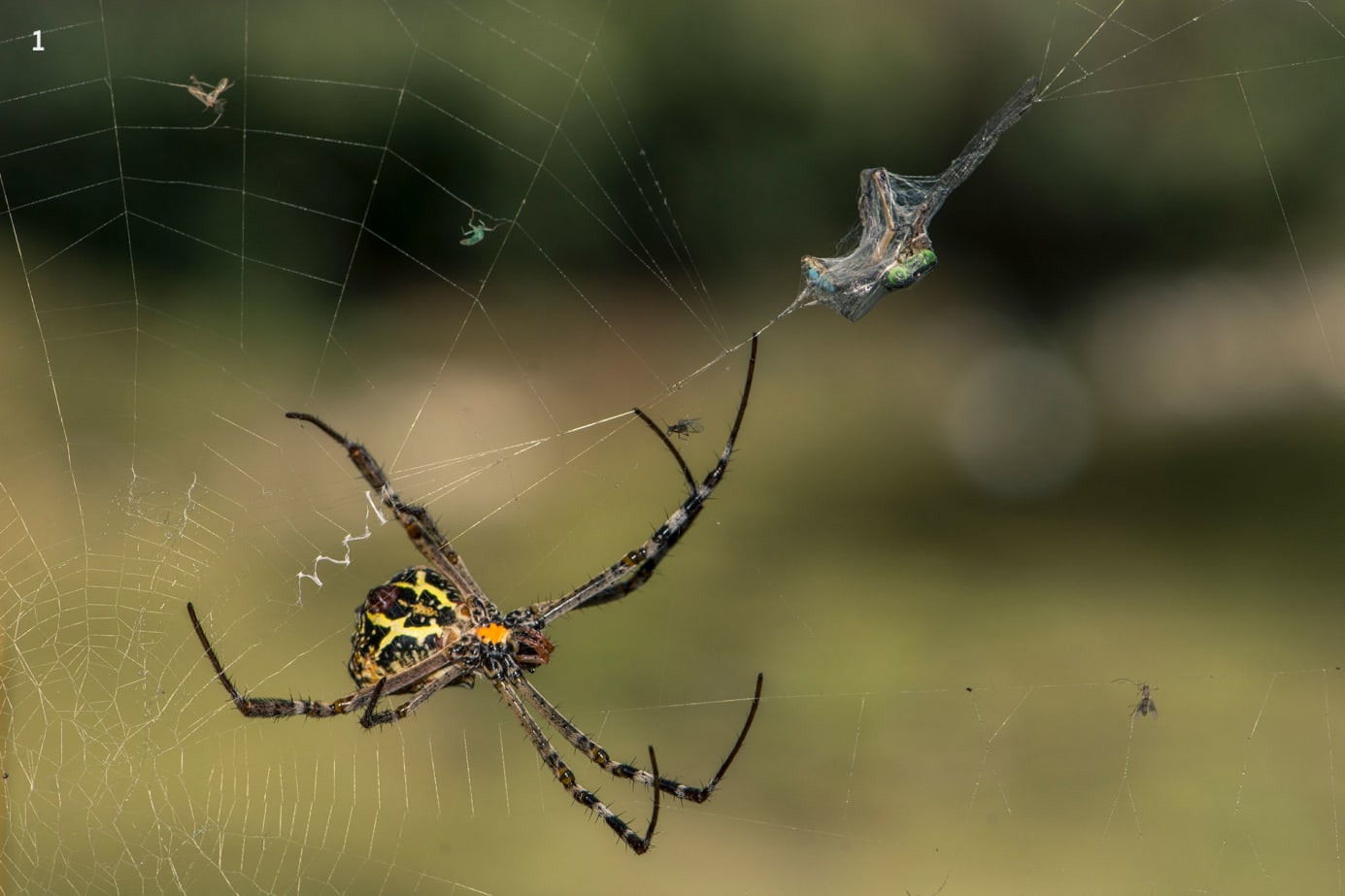 Listen to this article
•
15:34 min
Listen to this article
•
15:34 min
I live in Bangalore and conduct nature walks for a living as part of “Spiders And The Sea”, a nature-centric social enterprise I run with my partner Samuel John. My life is not unlike that of others I know in their mid-thirties living in a city. Most days begin with making lists, running errands, finishing chores, trying desperately to maintain a routine between work and navigating traffic. Days can be exhausting, blurry and seem deceptively short.
In all the chaos, there is one thing that John and I try not to miss doing, in rain, shine, or cold breeze. Every other morning, we head out on foot with our cloth bags, empty egg cartons and jars to buy groceries. Even though our destination is the grocers and vegetable carts, our walk to and from the market doubles up as a nature walk that is equal parts thrilling, energising, and calming. The grocery run then feels less like a chore and more like an adventure. I stepped out for a grocery nature walk one morning to write this story and try to find answers to some questions I get asked during our guided nature walks.

Set objectives vs aimless strolls
Nature walks can have set objectives, such as heading out to a lakeside to look for waterbirds that have migrated for the winter and trying to identify as many as possible. We look carefully among the reeds for shy waterhens, counting the number of shovelers and garganeys in the water, and wait to see if the cormorants catch fish on their breath-hold dives underwater.
Nature walks can also be aimless strolls where you don’t chart a route. You stop at whatever catches your attention: artistic bark textures, an unfamiliar call from the canopy, a fig tree full of fruit! You can use these observations like a trail of breadcrumbs to guide you through a patch of nature, which doesn’t have to be far off; it could be two streets from your home.
Setting the pace
The pace of exploring nature on foot gives our senses the time and bandwidth to register everything happening around us. For example, while jungle safaris tune our mind’s eye to large animals, often in the distance, what about the smaller wildlife, the jewel bugs under leaves, or still spiders mimicking twigs? How best can we spot them?
On a typical nature walk, John and I begin by reactivating all our senses, especially those numbed by the pressures of the city. Then, we explore, moving from patch to patch: trees, grasses, bushes and even the undersides of benches! Scanning these surfaces for life, we share our observations, put forth theories to explain some mysteries we stumble upon, and document what we find.
The first stop on my grocery shopping-nature walk today is the plants outside our neighbour’s house, where I pause to say hello to the scale insects. Their motionless armoured exteriors hide soft bodies that are busy drinking sap from young leaves.

Get a clue!
On a nature walk, besides looking for various life forms, we also look for clues and tracks indicating if someone lives or has been through there. Chewed-up leaves, trails of silk, footprints, or poop! Looking for clues is particularly useful when charting new trails or habitats.
I find the most fun in returning to regular haunts. For John and me, it’s the trails in and around Bangalore’s lakes and parks. There is something delightful about meeting old friends: the signature spiders in the hedges at Puttenahalli Lake in JP Nagar or spot-billed pelicans peacefully cruising the shallow waters of Jakkur Lake. And the anticipation of meeting someone new, like new fungi, we often stumble upon each time we visit Cubbon Park.
“Yeep, yeep, yeep” — I constantly hear birds above me while walking to the grocery store. Huddled together on overhead cables, a dozen at a time, are ashy woodswallows watching our busy urban lives.
The benefits
After a walk in nature, our journey to find out who the different life forms are begins as we research and learn their names and explore facts about their fascinating lives.
Over time, however, my relationship with nature has grown beyond this to envelop my entire life. There is something about walking in a patch of wilderness — forest, grassy meadow, city park — that instantly humbles and grounds me. Being surrounded by living creatures, whether in the soil under my feet or the towering canopy above, converts any loneliness into an inspired, happy solitude. I watch in awe a thousand weaver ants carrying insects to their nest on a tree, the timely fruiting of neighbourhood jamun trees, a female purple-rumped sunbird taking nesting material from our balcony. These moments give me the sense that, as a human, I am but a speck in this world and simultaneously part of something much bigger than I can imagine.
Just a few blocks before the grocery store, I notice a resting globe skimmer dragonfly hanging vertically from a thin twig. What is remarkable about this dragonfly is that if everything works in its favour, in a few weeks, it will use high-altitude trade winds to travel all the way to East Africa. But for the moment, it rests on a young silver oak tree growing through someone’s fence adjacent to a pile of construction rubble. A reminder that nature is ambitious and remarkably resilient.

Get started, keep going
Once we realise that nature encompasses more than large mammals and forests, a nature walk could start at home. On the balcony, from our windows, onto streets, parks and gradually outside the city.
Begin each nature walk with a few minutes awakening your senses. A silent meditation lets us tune into the smorgasbord of visual, auditory, chemical, and tactile stimuli surrounding us in nature. Next, find a comfortable pace by which you can process everything happening around you. When you enter a patch of the wild that appears interesting, like a massive, textured tree trunk or a canopy filled with movement and calls, scan the area thoroughly and do not hesitate to linger. I find that often, in the experience of observing animals and plants, we retain more than the facts we learn about them. Be a note-taker and doodler, even if you do not consider yourself a writer or artist. Making notes and drawing what you see nudges you to observe finer details, and these end up finding corners in your brain to settle in for longer periods.
After buying eggs and fresh vegetables, I head home. My last stop is the young palm in our garden to see if I can see the female crab spider that has rolled up a single palm frond to secure her egg sac. The eggs will hatch soon, and tens of hatchlings will emerge and balloon into the world.
I hope this story encourages you to explore the wild things around you and that you find ways to bring nature into your daily life. Regular nature walks might just add more time and energy to your days the way they have to mine.









